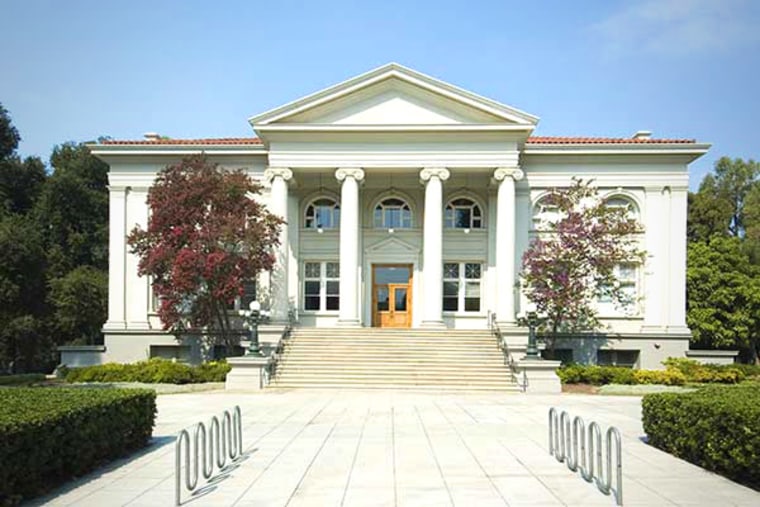Forbes' magazine's list of America's Top Colleges for 2013 is notable for what's not in the top slot: an Ivy League school.
The distinction of being number one this year goes to Stanford University (alma mater of Yahoo chief Marissa Mayer). The number-two school is Pomona College, a small liberal arts college in Southern California.
A slightly more diverse pool of "top" schools doesn’t make it easier for middle-class kids to afford an elite education, though, and although the rankings take future earnings into account, they don’t illuminate where surgeons, judges and other highly paid professionals went to school.
Read more about what went into the rankings
The Ivies, East Coast schools that have reigned supreme for the last two centuries, still pick up four of the top 10 spots — Princeton, Yale and Columbia are numbers three through five, respectively, and Harvard is number eight — and all are in the top 20. But schools on the West Coast have proven they are competitive. Stanford and Pomona climbed from numbers 23 and 20, respectively, in five years, and the top-ranked public school on the list is the University of California, Berkeley.
This may reflect a diversification in the assessment of what constitutes a “top” school, and perhaps an infatuation with Silicon Valley and the technology sector.
So-called STEM jobs get a lot of attention, but they comprise only about 6 percent of the job market, said Anthony Carnevale, director of the Georgetown University Center on Education and the Workforce. STEM stands for science, technology, engineering and mathematics.
“They're very important jobs … in part because of who's pushing for them — the high tech industry,” Carnevale said. “There's another 94 percent of the workers who need jobs.”
Although 3.75 percent of a school’s rank is determined by the number of students who get Ph.Ds, “The real metric is earnings,” Carnevale said. “What they should be focusing on is professional degrees … any kind of doctorate that has an occupational attachment.”
But paying for degrees in hopes they lead to high-income jobs has become more difficult. Two-thirds of students now graduate with an average $26,600 in debt, according to The Institute for College Access and Success.
Each of the top 10 schools costs more than $50,000 a year with the exception of the U.S. Military Academy at West Point. Students there pay with a commitment: five years of military service after graduation.
Forbes does factor student debt in its ranking formula, which accounts for 17.5 percent of a ranking’s weight. TICAS president Lauren Asher finds it lacking, though.
"It doesn't appear to include the share of students who graduate with debt or their average debt when they graduate, which are better indicators of what your debt expectations should be," Asher said. More detailed information about each school's individual debt profile is included in its summary listing, but it's not part of the weighted ranking that separates top schools from the rest of the pack.
When Forbes started ranking schools in 2008, debt wasn’t included in the criteria at all.
“At the time, I think the debt issue and the financial issues were a little less prominent in the discussion,” said Richard Vedder, director of the Center for College Affordability and Productivity. “It’s become a bigger issue.”
The list remains dominated by more-expensive private institutions, with only one state school (Berkeley) in the top 25. Forbes does compile a “best value” list, but it doesn’t take a 4.0 GPA to figure out which one college administrators would rather be on; Forbes even dubs its top 100 list “the only schools that matter.”
These lists feed into a kind of self-reinforcing feedback loop that Carnevale said makes it increasingly difficult for states to compete. “It's sort of a shame because building those elite public [schools] is really a remarkable achievement,” he said.
More business news:
